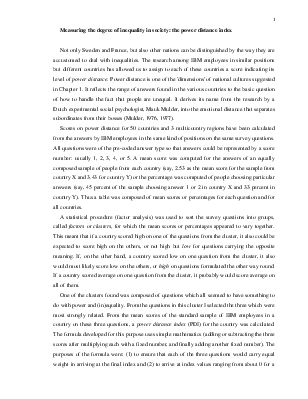
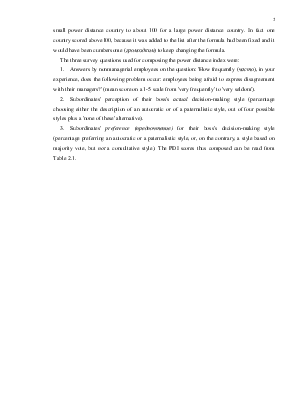
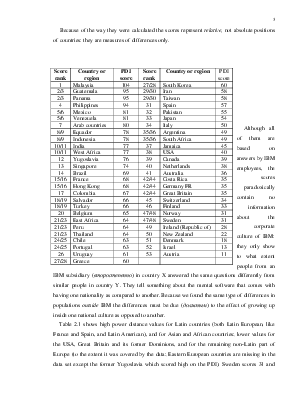
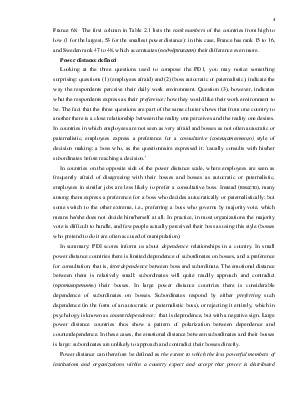
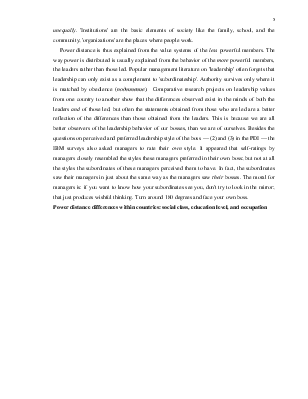
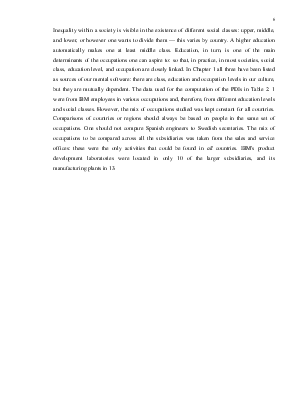
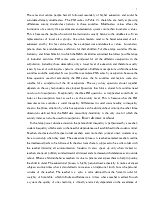
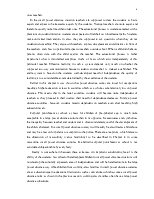
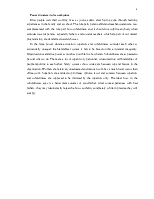

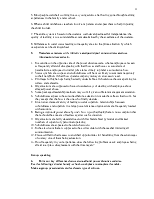

From the questions in this cluster I selected the three which were most strongly related. From the mean scores of the standard sample of IBM employees in a country on these three questions, a power distance index (PDI) for the country was calculated. The formula developed for this purpose uses simple mathematics (adding or subtracting the three scores after multiplying each with a fixed number, and finally adding another fixed number). The purposes of the formula were: (1) to ensure that each of the three questions would carry equal weight in arriving at the final index and (2) to arrive at index values ranging from about 0 for a small power distance country to about 100 for a large power distance country. In fact one country scored above l00, because it was added to the list after the formula had been fixed and it would have been cumbersome (громоздким) to keep changing the formula.
The three survey questions used for composing the power distance index were:
1. Answers by nonmanagerial employees on the question: 'How frequently (часто), in your experience, does the following problem occur: employees being afraid to express disagreement with their managers?' (mean score on a 1-5 scale from 'very frequently' to 'very seldom').
2. Subordinates' perception of their boss's actual decision-making style (percentage choosing either the description of an autocratic or of a paternalistic style, out of four possible styles plus a 'none of these' alternative).
3. Subordinates' preference (предпочтение) for their boss's decision-making style (percentage preferring an autocratic or a paternalistic style, or, on the contrary, a style based on majority vote, but not a consultative style). The PDI scores thus composed can be read from Table 2.1.
|
Score rank |
Country or region |
PDI score |
Score rank |
Country or region |
PDI score |
|
1 |
Malaysia |
104 |
27/28 |
South Korea |
60 |
|
2/3 |
Guatemala |
95 |
29/30 |
Iran |
58 |
|
2/3 |
Panama |
95 |
29/30 |
Taiwan |
58 |
|
4 |
Philippines |
94 |
31 |
Spain |
57 |
|
5/6 |
Mexico |
81 |
32 |
Pakistan |
55 |
|
5/6 |
Venezuela |
81 |
33 |
Japan |
54 |
|
7 |
Arab countries |
80 |
34 |
Italy |
50 |
|
8/9 |
Equador |
78 |
35/36 |
Argentina |
49 |
|
8/9 |
Indonesia |
78 |
35/36 |
South Africa |
49 |
|
10/11 |
India |
77 |
37 |
Jamaica |
45 |
|
10/11 |
West Africa |
77 |
38 |
USA |
40 |
|
12 |
Yugoslavia |
76 |
39 |
Canada |
39 |
|
13 |
Singapore |
74 |
40 |
Netherlands |
38 |
|
14 |
Brazil |
69 |
41 |
Australia |
36 |
|
15/16 |
France |
68 |
42/44 |
Costa Rica |
35 |
|
15/16 |
Hong Kong |
68 |
42/44 |
Germany FR |
35 |
|
17 |
Colombia |
67 |
42/44 |
Great Britain |
35 |
|
18/19 |
Salvador |
66 |
45 |
Switzerland |
34 |
|
18/19 |
Turkey |
66 |
46 |
Finland |
33 |
|
20 |
Belgium |
65 |
47/48 |
Norway |
31 |
|
21/23 |
East Africa |
64 |
47/48 |
Sweden |
31 |
|
21/23 |
Peru |
64 |
49 |
Ireland (Republic of) |
28 |
|
21/23 |
Thailand |
64 |
50 |
New Zealand |
22 |
|
24/25 |
Chile |
63 |
51 |
Denmark |
18 |
|
24/25 |
Portugal |
63 |
52 |
Israel |
13 |
|
26 |
Uruguay |
61 |
53 |
Austria |
11 |
|
27/28 |
Greece |
60 |
Because of the way they were calculated the scores represent relative, not absolute positions of countries: they are measures of differences only.
Although all of them are based on answers by IBM employees, the scores paradoxically contain no information about the corporate culture of IBM: they only show to what extent people from an IBM subsidiary (второстепенно) in country X answered the same questions differently from similar people in country Y. They tell something about the mental software that comes with having one nationality as compared to another. Because we found the same type of differences in populations outside IBM the differences must be due (должным) to the effect of growing up inside one national culture as opposed to another.
Table 2.1 shows high power distance values for Latin countries (both Latin European, like France and Spain, and Latin American), and for Asian and African countries; lower values for the USA, Great Britain and its former Dominions, and for the remaining non-Latin part of Europe (to the extent it was covered by the data; Eastern European countries are missing in the data set except the former Yugoslavia which scored high on the PDI). Sweden scores 31 and France 68. The first column in Table 2.1 lists the rank numbers of the countries from high to low (1 for the largest, 53 for the smallest power distance): in this
Уважаемый посетитель!
Чтобы распечатать файл, скачайте его (в формате Word).
Ссылка на скачивание - внизу страницы.